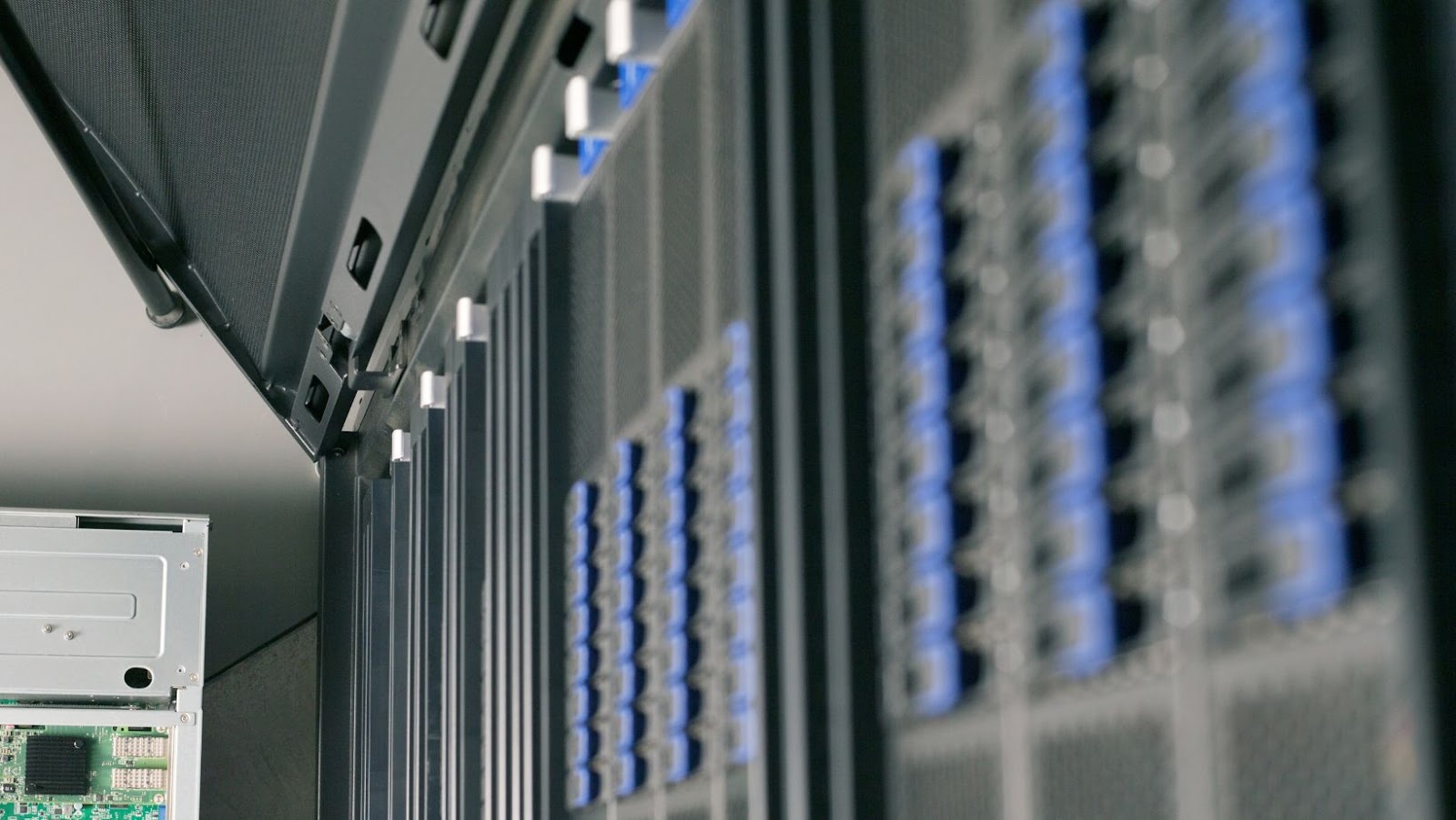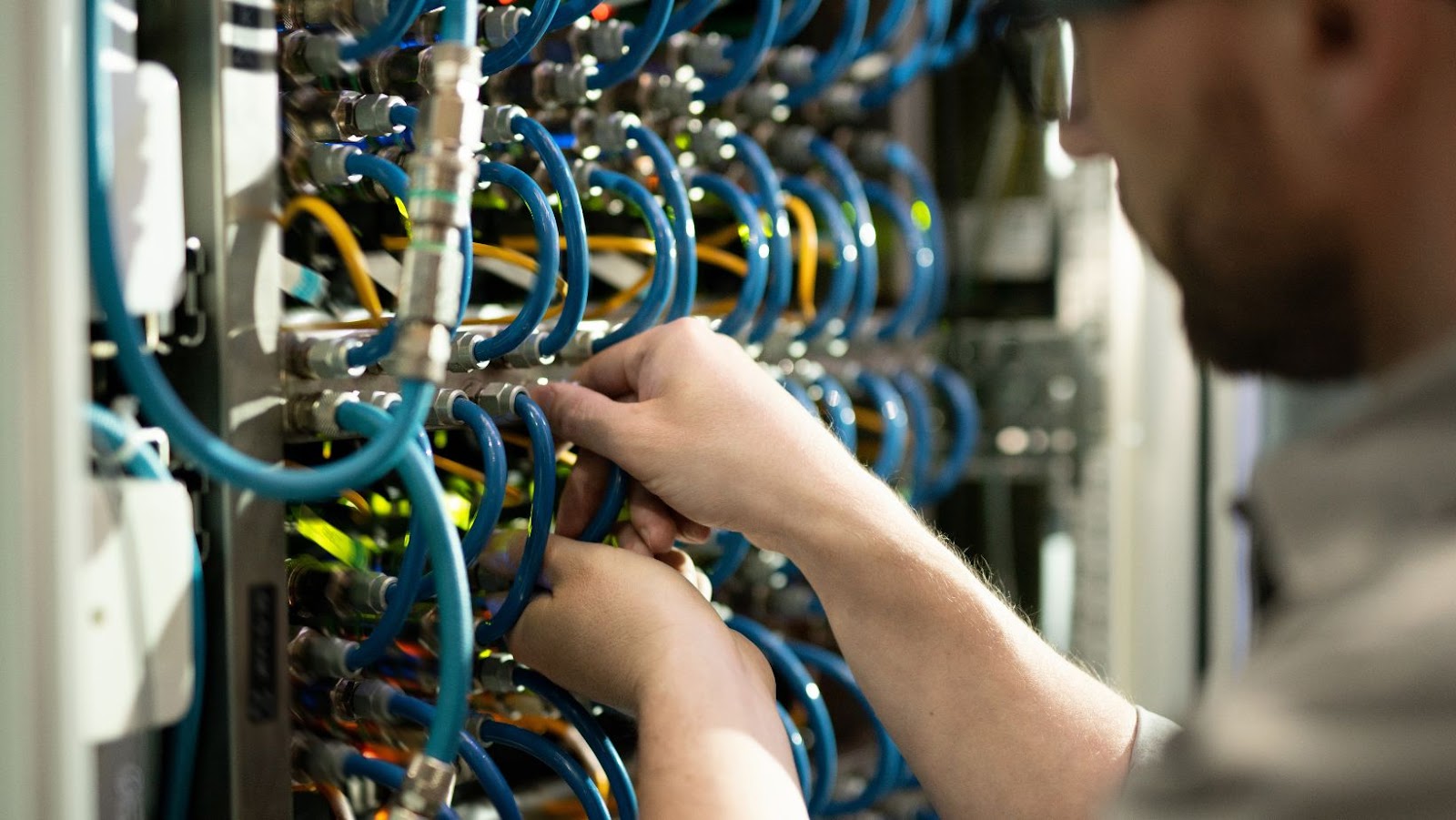Nvidia has announced the launch of a new supercomputer in the United Kingdom, which will support various health research projects. The $100 million investment will provide researchers with a powerful new tool to aid their work, and could provide insights into various medical conditions.
In this article, we will explore the details of this new supercomputer, and how it will benefit U.K. health research.
Overview of Nvidia’s supercomputer
The new Nvidia supercomputer, based in the UK, is an advanced system that is one of the most powerful machines ever built. It will be used for various health research projects such as gene therapy and drug discovery. It combines two parts of Nvidia’s corporate philosophy—AI and healthcare—to form a robust machine that can quickly and precisely handle large amounts of data.
Nvidia’s supercomputer features advanced technologies such as GPUs, AI algorithms, and DLSS (Deep Learning Super Sampling). The GPUs boost processing power by allowing data to be parallel processed across many different cores simultaneously. The AI algorithms are used to analyse large datasets quickly and accurately, to find patterns or trends within the data. Lastly, DLSS allows for increased image quality without additional computer load by reducing noise with minimal performance draw.
Overall, Nvidia’s supercomputer is an impressive piece of hardware that should be able to make headway in health research projects going forward. Its combination of powerful GPUs, AI algorithms, and DLSS should help make quick work of complex datasets while producing accurate results with no noticeable reduction in quality.
Nvidia launches $100M supercomputer for U.K. health research
Nvidia has recently launched a $100M supercomputer to help with health research projects in the United Kingdom. The supercomputer, named Cambridge-1, is powered by Nvidia’s latest technology and will be used to help aid researchers as they work to develop emerging treatments and cures.

The supercomputer will also provide AI capabilities to further enhance the health research efforts. But, first, let’s take a deeper look into what the launch of this supercomputer entails.
Overview of the supercomputer
Nvidia Corporation has recently unveiled a powerful, revolutionary supercomputer designed to help address some of the world’s biggest healthcare challenges. Named Clara, this ultra-fast, highly scalable computing platform helps healthcare researchers tackle difficult problems and drive medical breakthroughs. Here’s an overview of this powerful system and what it could mean for the future of healthcare research and development.
Clara is powered by Nvidia’s latest and most advanced GPU cards including NVIDIA A100 Tensor Core GPUs, giving it up to three-times faster performance than previous generations of GPUs. It can deliver up to 5 petaFLOPS or five quadrillion calculations per second — making it one of the fastest supercomputers dedicated to health research in the world today.
Nvidia is enabling Clara with its end-to-end technologies, including optimised software libraries, software tools and support for CNNs (Convolutional Neural Networks). This stack greatly simplifies building complex AI models that can interpret vast amounts of data quickly and accurately while providing GPU acceleration across AI training workflows. Clara also features integrated management tools such as Kubernetes orchestration and containerization frameworks like Kubeflow, making managing workloads easier.
In addition to being incredibly fast, Clara has incredibly high accuracy rates — meaning health researchers can gain more accurate insights faster than ever. This accuracy allows medical professionals to move beyond basic experiments towards complex tasks such as genome sequencing or precision medicine projects while getting results fast enough for diagnosis or treatments.
Seeing an opportunity for much greater collaboration between the medical research community, Nvidia provides free access to its tools on the storage space resources if needed. This capability makes it possible for institutions around the globe working on different research areas related healthcare projects to access each other’s data sets securely – driving greater innovation in real time. As a result, many new advances in disease prevention, diagnostics, monitoring treatments, compound analysis etc.. can now be enabled at a much faster pace enabling better patient outcomes.
Technical specifications
Nvidia’s DGX-2 supercomputer can provide 2 PetaFLOPS of compute performance, outpacing the world’s fastest supercomputers from several years ago. It’s built with 16 NVIDIA Tesla V100 GPUs and 2 20-core Intel Skylake CPUs, interconnected using a Mellanox InfiniBand network for high bandwidth data transfers. The DLX-2 also includes 48 TB of system RAM and 8 TB of NVMe SSD storage capacity.
The components are arranged in four 4-GPU nodes; each node has 123 GB or RAM dedicated to GPU functionality, 64 GB of RAM memory and dual 10 GbE port connecting it to the rest of the nodes as part of a high speed, low latency cluster fabric. Multiple 25G transport layers connect all these nodes on NVIDIA NVSwitches to achieve an aggregate speed 5X faster than previous generation products. In addition, the fabric provides an efficient interconnect between all GPU computing elements, enabling tasks to be spread across multiple nodes for maximum scalability and performance.

The DGX-2 can be used for deep learning training workloads, analytics and high performance computing with support for multiple languages such as C++ and Python. In addition, Nvidia offers its HPC SDK suite with dozens of libraries optimised to exploit the capabilities of GPUs for scientific computing applications such as distributed parallel programming or big data analytics tasks including graph analysis or machine learning algorithms.
U.K. Health Research
The United Kingdom is taking the lead in advancing healthcare through technology. The latest development is Nvidia’s launch of a $100 million supercomputer for various health research projects.
By leveraging the computing power of this new supercomputer, the UK can innovate and create new treatments, diagnostics, and interventions that can improve patients’ lives.
Let’s explore further how this supercomputer will be used for health research projects.
Overview of the health research projects
The United Kingdom’s supercomputer will power a range of health research projects. A consortium of the Medical Research Council, University College London Hospitals NHS Foundation Trust, and the Alan Turing Institute is leading the projects.
The four research strands will include:
- Using the supercomputer to process and analyse large amounts of data to develop Artificial Intelligence (AI) models for medical diagnosis, image analysis and drug discovery processes.
- Detecting hidden patterns in genomic data.
- Aiding medical intervention planning.
- Modelling infections and diseases on global scales.
These pioneering new uses of the most powerful supercomputers in Europe have potential to revolutionise healthcare delivery in terms of speed, accuracy and cost by improving diagnosis, allowing personalised treatments and greatly enhancing preventive measures. In addition, makes possible efficient storage and sharing techniques for very large datasets across clinical researchers providing essential tools for discovering new treatments rapidly which in turn support faster healthcare innovation cycles.
The project is expected to have great value for medical practitioners worldwide and offer economic benefit through improved patient outcomes through reducing costs by cut-down delays due to inaccurate analysis. The world’s leading experts in AI, computer science, machine learning and bioinformatics are providing technical input into this ground-breaking platform which is set to be an industry leader in its field.
Potential applications of the supercomputer
The supercomputer will enable the UK to take advantage of artificial intelligence (AI) advances to explore solutions to some of the world’s most pressing health challenges. This state-of-the-art technology allows scientists and engineers to use advanced computing capabilities for various health research projects.
Potential applications of the supercomputer include:
- Assessing genetic changes across millions of individuals for development of precision medicine solutions
- Creating real-time simulations for understanding the spread and impact of infectious diseases like COVID-19
- Developing new ways to diagnose, treat, manage and prevent chronic illnesses such as obesity, diabetes and depression
- Advancing understanding around neurological disorders such as Alzheimer’s disease, Parkinson’s disease, epilepsy and brain injury
- Developing agents capable of autonomously interacting with complex environments to carry out investigations into a range of medical conditions
- Conducting large scale medical imaging analysis projects
- Analysing data from medical devices such as blood pressure monitors or glucose monitors to identify patterns associated with common illnesses
Benefits of the Supercomputer
The U.K. has recently been granted a new supercomputer, courtesy of Nvidia.

This state-of-the-art supercomputer will be used for a range of health research projects, potentially drastically accelerating medical breakthroughs and improving patient care.
This article will outline the numerous benefits this supercomputer brings to U.K. health research.
Improved health research capabilities
The introduction of supercomputers in health research projects has the potential to revolutionise health outcomes. By applying vast amounts of computing power, supervised learning algorithms, and specialised training data, researchers can give faster responses, deeper insights and improve their ability to accurately predict the subsequent actions of particular therapeutic or treatments at a fraction of the time.
Use cases like these rapidly make supercomputers an integral part of healthcare innovation. With intense computing power and analytics capabilities, massive amounts of data can be rapidly analysed more accurately than ever before. This gives researchers more detailed insight into disease prevention strategies, drug screening and individualised treatments.
Furthermore, enhanced organisational capabilities and cloud computing tools in place for medical imaging services for patients increase speed diagnostics for clinical processes, making it possible for healthcare providers and researchers to analyse vast amounts of clinical imaging faster than ever before.This improves the patient’s care and reduces costs associated with managing storage space for medical archives due to greater efficiency in retrieving existing data quickly when needed.
In conclusion, supercomputers have a range of potential applications in healthcare research projects, making them advantageous due to its immense computing power, analytics capabilities and enhanced organisational capabilities. With this technology in place in health research organisations, they will be able to provide better understanding of how certain illnesses can be treated or prevented and provide quicker results that will save lives across all demographics.
Increased efficiency and accuracy
The use of supercomputers in medical research has become increasingly popular in recent years. This is due to their ability to accomplish complex tasks, such as simulations and data analysis, much faster and more accurately than traditional computers. This can drastically reduce the time required to collect and analyse data, thus accelerating the pace of research.
With advances in computing technology, supercomputers are now being used for various health studies across disciplines such as genomics, neuroscience, epidemiology, bioinformatics and pharmacology. They allow researchers to quickly crunch massive amounts of data with greater accuracy than before. As a result, studies can be completed quicker and with less potential for errors or inaccuracies due to human oversight.
By taking advantage of the powerful capabilities offered by supercomputers, progress towards finding cures for serious diseases and conditions like cancer could be accelerated significantly while providing clinicians with useful real-time insights into patient health. Projects involving supercomputing can also help researchers develop sophisticated digital models that mimic physiological systems and enable doctors to better understand how diseases progress over time and respond differently between patient populations – hopefully leading scientists closer to unlocking new treatments for illnesses eventually.
tags = nvidia 100m aitakahashiventurebeat, nvidia, supercomputer, health research
















